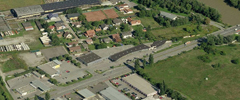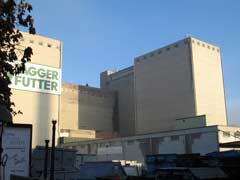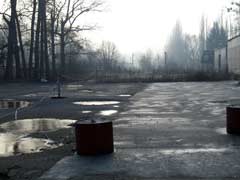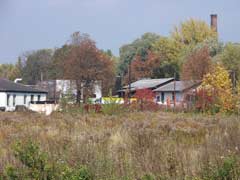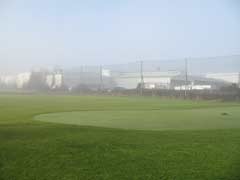CITY STRATEGY
Reactivating the railway track as an infrastructure for future-orientated companies is an internationally acclaimed initiative leading to new types of organization of space. The sustainable substance of this attractive image will be used to revitalize a large area giving the city a new and highly significant space. The qualities of the new strip correspond to various goals: 1. the making public of the waterfront of the main river; 2. the support of mobil¬ities with low negative impact on en¬vironments connecting to diverse urban activities. 3. strategies for densifying areas with trade uses 4. attracting international players on the market.
The successful relation between densification, quality of public space and future coexistence of different mobilities on the strip – trains, trucks, bicycles, rollers, runners, walkers, strollers, dogs, etc. – shall demonstrate how a city can manage the dialogue between public and private forces.
SITE DEFINITION
The southern area of the historical “Grazer Schleppbahn” (industrial rail-track) is located in the districts Gries and Puntigam. Like a spine it connects the existing retail and industrial uses over e length of about 3 kilometers. As Graz developed southwards parallel to major N-S lines including also the natural element of the river Mur, a strong presence of landscape qualities accompanies the large scale developments of the existing companies. A partly attractive river promenade is already established and provides a popular North-South connection for bicycles and pedestrians. The space is used as connection and leisure place at the same time. Recent initiatives like the new Innovation-Park-Graz are proof of the ongoing interests in developing this area. The reactivation of the railway track in 2009 is a unique possibility of creating an intensified and progressive work environment in dialogue with new public spaces.
NEW URBAN MOBILITY
The frenzy dialogue between various parallel mobilities – running water, sports, trucks, trains and public walks – is the starting point for a new idea of landscape organizing the movements of the everyday in an attractive way: mobility no longer performs as mono-functional connection but offers various speeds, approaching even the pleasures of 0 kilometers per hour.
NEW SOCIAL LIFE
The connection of the consolidated urban fabric to the southern areas of the city could be used to create a distinct public space for different people, not only connecting them with different areas but also allowing them to dwell, rest, live, work and play along this strip.
NEW ECOLOGY
1. The use of the reactivated railway track creates a sustainable working environment using low impact transport;
2. This situation has to be further exploited by typological transformations allowing higher densification;
3. New ecology as “the art of coexistence”: the orchestration of new relations between infrastructure, nature, industry and public space.
 |


